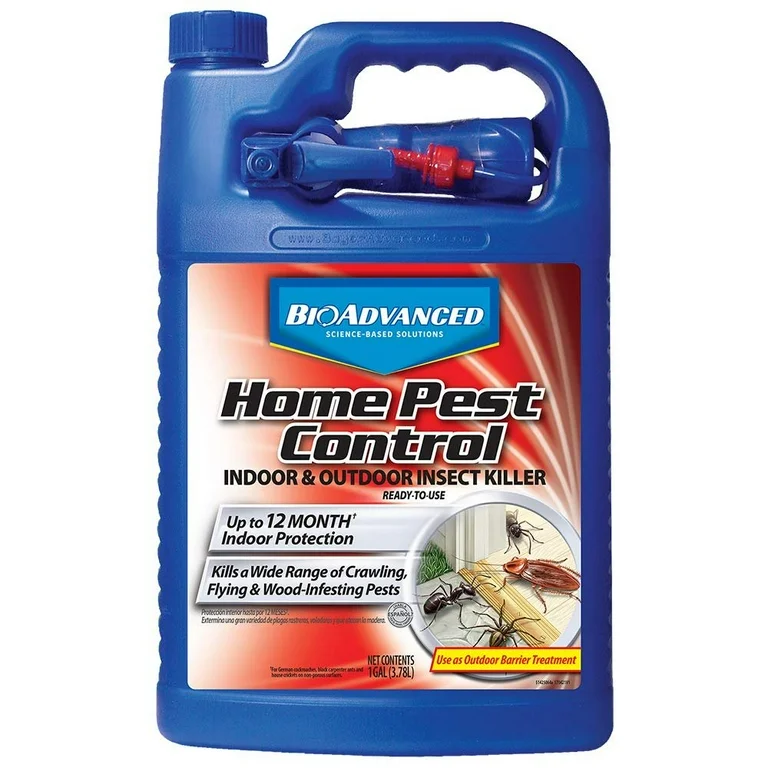High Quality A1 Pest Control Services Charlotte - Protect Your Home
High Quality A1 Pest Control Services Charlotte - Protect Your Home
Blog Article
Bed Pest Therapy Malfunction: Comparing Chemical Vs. Non-Chemical Solutions
In the realm of parasite control, especially when managing the consistent concern of bed insects, the choice between chemical and non-chemical treatment options can be a crucial one. Both methods use unique advantages and drawbacks, influencing aspects such as effectiveness, safety and security considerations, and total cost. By checking out the nuanced details of each technique, a more clear understanding of which path to go after in dealing with a bed bug infestation can be acquired.
Efficiency of Chemical Treatments
Chemical treatments for bed insect invasions have been widely recognized for their powerful and rapid efficiency in removing these pests. When thinking about the effectiveness of chemical therapies, it is essential to comprehend that they can give a fast and complete remedy to a bed bug issue. Specialist pest control men usually depend on insecticides to target bed bugs at numerous stages of their life cycle, consisting of eggs, fairies, and adults. These chemicals commonly work by disrupting the bed bugs' anxious system, leading to paralysis and eventual fatality.
Moreover, chemical treatments have the benefit of supplying residual effects, implying that they can continue to get rid of bed insects also after the first application. This recurring action is specifically useful in combating any type of possible re-infestations. In addition, the rapid action of chemical therapies can bring relief to people dealing with severe bed bug infestations, allowing them to regain control of their home quickly.
Security Worries With Chemical Solutions
When using chemical services for bed pest treatment is making certain the safety and security of passengers and the setting,One crucial element that requires mindful factor to consider. While chemical therapies can be efficient in removing bed bugs, they may present threats otherwise handled effectively. One of the primary security problems with chemical services is the potential injury they can trigger to human health. Exposure to certain chemicals used in bed insect therapies can result in respiratory system concerns, skin irritability, or other adverse reactions, especially in people with pre-existing conditions or level of sensitivities. Furthermore, inappropriate application or dosage of chemical pesticides can lead to toxic residues remaining in the treated area, presenting long-lasting health risks to passengers.
Moreover, the environmental impact of chemical solutions is an additional significant factor to consider. Some chemicals utilized in bed bug therapies may be damaging to advantageous insects, wild animals, and communities if they leach right into the soil or water supply. It is important to utilize chemical therapies judiciously, following safety and security standards, and taking into consideration less harmful alternatives to reduce these dangers and make sure the safe and reliable monitoring of bed insect infestations.
Advantages of Non-Chemical Techniques
Considering the prospective security concerns and ecological influence connected with chemical options for bed insect therapy, checking out non-chemical approaches provides an encouraging choice with several unique advantages. Non-chemical techniques provide a safer option for families, particularly those with family pets, youngsters, or individuals conscious severe chemicals. These approaches eliminate the dangers of exposure to harmful substances, lowering the potential for unfavorable health and wellness impacts. In addition, non-chemical treatments are environmentally friendly, as they do not add to air or water pollution, making them a sustainable selection for pest control.
In addition, non-chemical services can be effective in targeting bed bugs, including hard-to-reach locations where chemical therapies might not pass through - A1 bed bug exterminator charlotte. Techniques such as warm treatment, vacuuming, steam cleansing, and bed mattress coverings supply detailed eradication without the use of unsafe chemicals.
Limitations of Non-Chemical Treatments

In addition, non-chemical therapies usually call for numerous applications to achieve successful removal. This can be taxing and may not always guarantee full removal of all bed bugs and their eggs, particularly in hard-to-reach or covert locations.
Moreover, the success of non-chemical treatments greatly counts on proper application and thoroughness, which can be testing for people without expert experience. Poor application of non-chemical methods might lead to incomplete removal, leading to consistent infestations and the requirement for added treatments.
For that reason, while non-chemical treatments have their benefits, it is important to acknowledge these constraints and consider them when establishing the most effective approach for handling bed bug infestations.
Price Contrast: Chemical Vs. Non-Chemical Options
Offered the constraints linked with non-chemical therapies, an essential aspect to assess in the context of bed insect monitoring is the cost contrast in between chemical and non-chemical options. In comparison, non-chemical treatments like warm therapy or steam can be a lot more costly, with costs varying from $1,000 to $6,000 for an entire home. While the first price of chemical treatments might seem reduced, several treatments may be needed to completely eliminate the invasion, potentially raising the total price.
Conclusion

Thinking about the possible safety and security problems and environmental effect linked with chemical services for bed insect treatment, checking out non-chemical approaches provides a promising option with numerous unique advantages.Offered the limitations linked with non-chemical treatments, an check it out essential element to evaluate in the context of bed insect management is the cost comparison in between chemical and non-chemical alternatives. In comparison, non-chemical treatments like heat treatment or heavy steam can be a lot more costly, with prices varying from $1,000 to $6,000 for a whole home. While the preliminary expense of chemical therapies might appear reduced, several therapies may be called for to totally eliminate the infestation, potentially enhancing the overall expense.In verdict, when contrasting chemical and imp source non-chemical bed pest treatment options, it is crucial to consider efficiency, safety and security, benefits, restrictions, and price.
Report this page